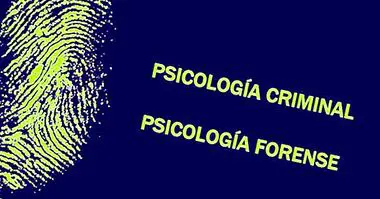The helplessness learned in the victims of mistreatment
The concept of learned helplessness is one of the most widely studied constructs due to its decisive influence on many psychosocial processes.
It has its origin in 1975, when Martin Seligman and his collaborators observed that the animals of their investigations suffered depression in certain situations.
What is learned helplessness?
To find out the reasons for this depression that they noticed in dogs, Seligman performed the following experiment. He placed several dogs in cages from which they could not escape, administering electric shocks with random and variable time intervals, so that they could not predict the next discharge or the pattern of them, since none existed.
After several trials administering discharges, and although at first the dogs made various attempts to escape, it was observed that in the end they abandoned any voluntary escape activity. When the researchers modified the procedure and taught the dogs to escape, they stayed quiet, refusing to go out or make attempts to avoid discharges, even lying flat on their own excrement.
Given these results, Seligman discovered that the response of the animals was not totally passive, but that lying on their own excrement was, in fact, a coping strategy (adaptation), since lying on them minimized the pain and were located in a part of the cage where the least amount of electrical discharges was perceived. He called this effect as Learned helplessness.
Learned helplessness: a psychological phenomenon also present in humans
Learned helplessness produces a modification of escape responses with unpredictable consequences due to more predictable coping strategies. At the same time, Seligman discovered that it is possible to unlearn learned helplessness , because when they taught the dogs with repeated tests that they could escape from the cage, the learned helplessness response finally disappeared.
This experiment has been replicated in humans concluding that the important aspects of the syndrome of learned helplessness are centered in the cognitive aspect, that is, in the thoughts. When people have lost the ability to believe that their responses will help them escape from the situation, they modify their flight responses by submission behaviors, as a coping strategy.
The presence of learned helplessness in victims of violence

This modification of flight responses due to submission behaviors has been observed in victims of mistreatment with learned helplessness. Lenore Walker conducted this study on victims of maltreatment in the couple, performing a similar assessment of cognitive, emotional and behavioral functioning.
The results showed that at the beginning of the mistreatment their responses or behaviors were evasion or flight. But nevertheless, continued exposure to violence led to a modification of these responses they had learned that could diminish the intensity of the mistreatment through diverse coping strategies such as pleasing the aggressor, doing what he wants, keeping him calm, etc.
Thus, the theory of learned helplessness applied to victims of abuse describes how a woman can learn to be unable to predict the effect her behavior will have on the abuser. This lack of ability to predict how effective your own behavior will be in avoiding abuse modifies the origin or nature of the victim's response to different situations .
If you want to go deeper into this topic, I recommend the interview that Bertrand Regader gave to Patricia Ríos: "Interview with a psychologist expert in gender violence"Signs indicating that someone is a victim of abuse and has developed learned helplessness
When women victims of mistreatment on the part of their partner suffer from learned helplessness, they will choose in a known or familiar situation those behaviors that produce a more predictable effect and will avoid behaviors that imply a less predictable effect, such as escape or flight responses .
This investigation also allowed to propose certain factors that allow to identify the learned helplessness in victims of mistreatment . The factors are:
- The presence of a pattern of violence , specifically the Cycle of Violence, with its three phases (accumulation of tension, serious episode of aggression and affectionate repentance or absence of tension), together with the modification or observable increase in the intensity and frequency of mistreatment.
- Sexual abuse towards women .
- Jealousy, intrusion, over-possession, and isolation of women.
- Psychological abuse : verbal degradation, denial of faculties, isolation, occasional indulgence, monopolizing perceptions, threat of death, weakness induced by drugs or alcohol.
- Presence of violent behavior of the couple towards others (children, animals or inanimate objects).
- The abuse of alcohol or drugs on the part of the man or the woman.
Last but not least, this study has allowed it to be used for the psychological treatment of victims of mistreatment.
Unlearning Learned Helplessness
The process of unlearning learned helplessness it is characterized by the empowerment of these women within the couple's relationship , which will allow abused women to understand and get out of the cycle of violence, orienting them on how the escalation of violence can be predicted, through the distinction of the different phases of the cycle and the understanding that the phases of love and Repentance is a way to reinforce the cycle and teach them different skills to escape.
However, it is important to consider that there are differences between laboratory and real life studies and it is necessary to keep in mind that in real life the abuser can become more violent when the woman confronts him and / or when he tries to separate.



















